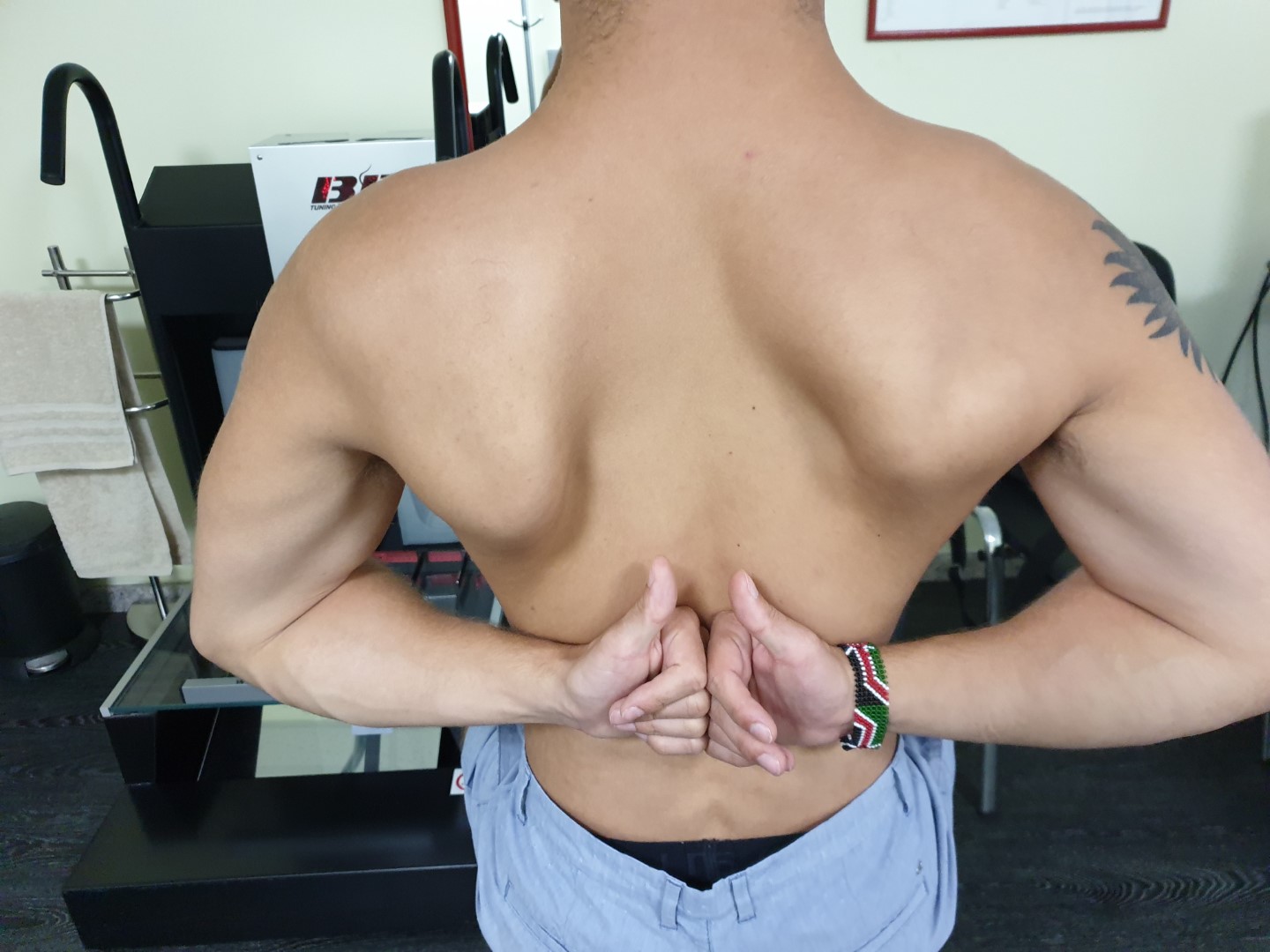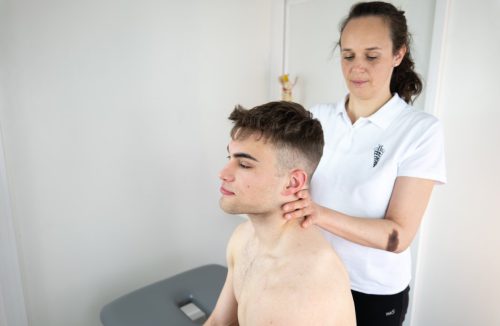When the scapula makes an unusual movement when raising the arm, we call it dyskinesia. This phenomenon has been talked about a lot in the profession for the last twenty years.
Scapular dyskinesia
Description
When the scapula makes an unusual movement when raising the arm, we call it dyskinesia. This phenomenon has been talked about a lot in the profession for the last twenty years.
In the literature, it is defined as an abnormal position or movement of the scapula, although today there is no clear understanding of what its normal mobility would be.
The causes of dyskinesia are also not fully understood. Namely, it is clear that the movement of the scapula when moving the arm will change when one of the bones of the shoulder girdle, such as the clavicle or humerus, is broken. The change in nerve damage is also easily explained. But the vast majority of dyskinesias occur in patients without the described problems.
We often see it in people with a painful shoulder, but it is not rare even in people without symptoms. Also, a good number of shoulder pain conditions are not accompanied by dyskinesia at the same time. In addition, it is very common in some sports, such as swimming. Within the swimming population, and those who do not have problems with their shoulder, it regularly occurs after intensive training, i.e. when tired.
Weakness of certain muscles and shortening of some structures in the shoulder girdle is another set of possible causes. But despite many scientific papers written on this topic, a clear cause-and-effect relationship has not been established.
And so, faced with a scapular movement that visually clearly deviates from the average or something we’ve declared desirable, we still don’t have a precise understanding of whether what we’re seeing is a symptom or a disorder in itself.
What we do know is that the activation of the muscles of the shoulder girdle through a persistent complex exercise program significantly reduces dyskinesia in some patients, and such an approach to treatment is recommended, especially in patients with pain syndromes.
Tension model
The movements of the scapula, as in the rest and every other part of the body, are not completely identical in all people. If you look carefully for a moment at how people walk on the road, you will see that each of us walks differently. From the large and clear differences between a child’s gait and the gait of a very old and frail person, all the way to subtle differences between people of the same gender and age. But even in that crowd, we will clearly recognize when someone is clearly limping. Although we cannot know the exact reason from the limp, it is clear to us that the person who limps has some disorder. We can apply the same principle to the spatula. Individual differences in its initiation exist in the population, but it is clear to us when we see dyskinesia that something is wrong. We won’t make a big mistake if we call dyskinesia a scapular limp.
Limping allows us to reduce the load when walking on an injured part of the body or a painful leg. Similarly, dyskinesia allows better stabilization of the shoulder joint through a different movement of the scapula. In this sense, dyskinesia itself is a symptom, which we use as a tool for more precise diagnosis of pathological and painful conditions of the shoulder, and at the same time it (its reduction) is also a measure of the success of the therapy. To make the confusion worse, sometimes we will stimulate the onset of dyskinesia, in order to reduce the pain.
You can find more about this entire phenomenon on these pages or by searching for scientific papers.






